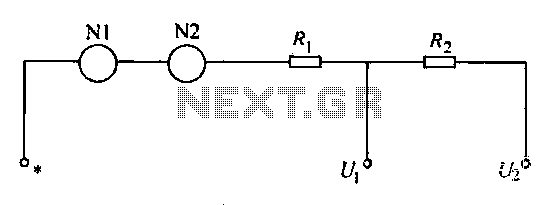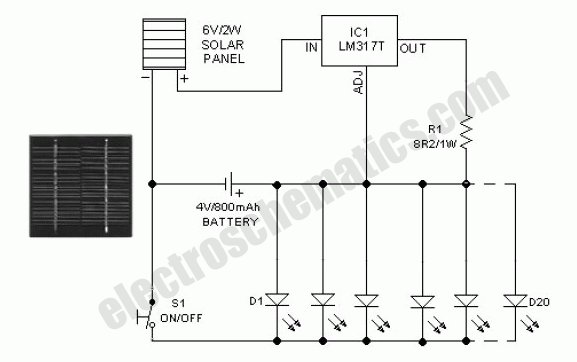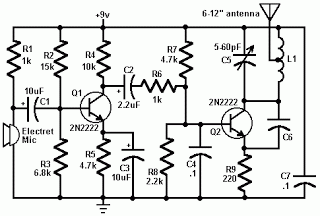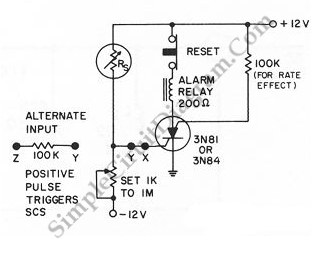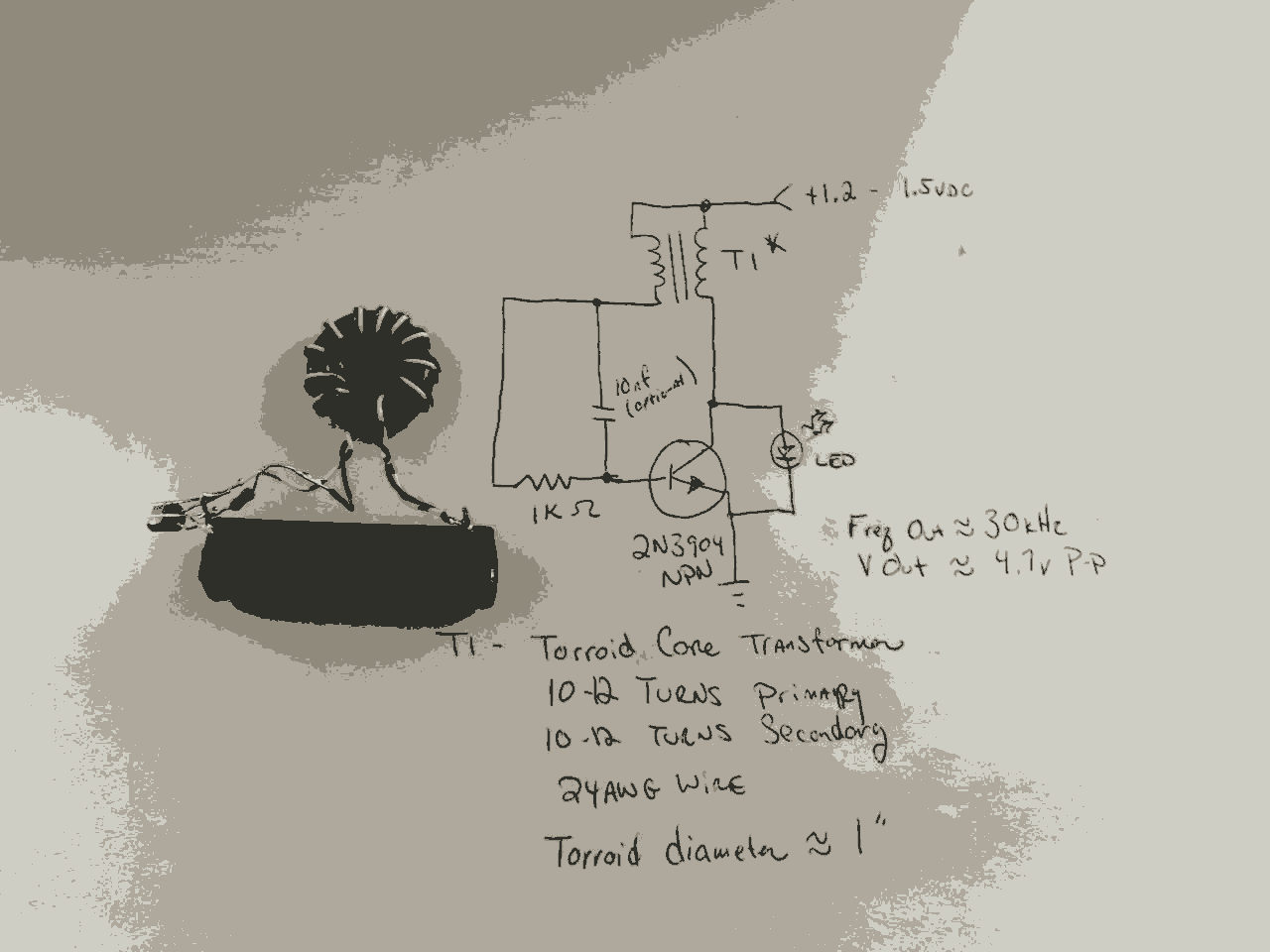
Intelligent transformer temperature monitor circuit module design

A company has developed an intelligent temperature monitoring system using the ATMET 89C51 microcontroller. This system automatically records temperature data for a three-phase power supply, including high temperature and other relevant data, functioning as a black box. The ATMET 89C51 is an 8-bit Flash microcontroller that features 4KB of reprogrammable Flash memory, 128 bytes of internal RAM, and two 16-bit timer/counters, making program modifications during development straightforward and ensuring compatibility with the MCS-51 architecture. For LED control, the system utilizes the PS7219, which interfaces via a synchronous serial peripheral interface (SPI) and can drive up to eight digital outputs. It includes 15 internal control registers for easy address identification of each digit, allowing for adjustable display brightness and full control of flashing lights for functional testing. The design minimizes CPU port usage and conserves CPU time. The system employs a composite keyboard with fewer keys, designed for standalone interface use, and utilizes level detection input lines to identify key presses. Communication with the host meter is facilitated by the MAX232 chip, which serves as a dual driver/receiver and includes a capacitive voltage generator to convert EIA/TIA-232-E levels to 5V TTL/CMOS levels. For data retention, an EEPROM circuit and power monitoring circuitry have been designed. The output driver circuit employs the ULN2003 chip, which contains seven Darlington pairs capable of handling a maximum current of 500mA and can drive relay inductive loads due to its internal freewheeling diodes. The signal processing circuit includes the CD4052, a dual analog switch that acts as a 4-to-1 multiplexer, allowing selection between four groups of input signals: three-phase winding temperature signals and an optional ambient temperature signal. The microcontroller controls the switching of these signals through its port lines. To enhance the instrument's anti-jamming capability, an RC low-pass filter is implemented. The first stage of the preamplifier uses a differential connection to increase input impedance and achieve a high common-mode rejection ratio. Resistors R4, R5, R6, R7, R8, and R9 are carefully selected for matching two pairs, while the TIL7650 chopper-type auto-zero op-amp is chosen for its low drift, low offset, and high gain. The second stage inverting amplifier's gain is adjustable via a multi-turn potentiometer (RW2).
The described intelligent temperature monitoring system leverages the capabilities of the ATMET 89C51 microcontroller to gather and process temperature data effectively. The use of reprogrammable Flash memory allows for flexibility during development, while the integration of SPI with the PS7219 LED driver enhances display control. The communication interface provided by the MAX232 chip ensures reliable data transmission between the monitoring system and the host meter, accommodating the necessary voltage level conversions for effective communication.
The output driver circuit, ULN2003, is well-suited for controlling inductive loads such as relays, which is essential for managing the operational states of the monitored system. The signal processing capabilities, facilitated by the CD4052 multiplexer, enable the selection of pertinent temperature signals, ensuring that the most relevant data is monitored and recorded.
The design emphasizes noise reduction through the implementation of an RC low-pass filter, which is crucial for maintaining signal integrity in environments with potential electromagnetic interference. The differential preamplifier stage enhances the system's performance by providing high input impedance and common-mode rejection, critical for accurate temperature measurements. The careful selection of components, including resistors and operational amplifiers, contributes to the overall reliability and accuracy of the temperature monitoring system, making it suitable for various industrial applications.A company is given to ATMET 89C51 microcontroller core temperature intelligent monitor, monitor with automatic temperature recording a three-phase power before phase, a record high temperature and other data and black box function. 89C51 microcontroller is ATMETs 8-bit Flash microcontrollers, the biggest feature is the on-chip containing 4KB re-programmable Flash memory, 128 8B internal RAM and two 16-bit timer/counter, in the development process is easy to modify the program and is compatible with MCS-51. For LED control driver, use PS7219, and its interface with synchronous serial peripheral interface (SPI), can drive eight digital control (using one of five), because having 15 8RAM PS7219 internal function control register, easy to find address of each digit individually controllable refresh the display brightness can be CNC, each with a flashing light to enable full control and functional testing, which simplifies hardware design, CPU port line savings and reduction occupy CPU time.
Because the work status settings, parameter settings and other key composite keyboard the way, thus has fewer keys, keyboard keys are designed as standalone interface through level detection input lines can easily determine which key was pressed. Communication with the host meter using MAX232 chip, this chip has a dual driver/receiver, chip contains a capacitive voltage generator to provide EIA/TIA-232-E level on a single supply each a receiver to EIA/TIA-232-E level input is converted to 5V TTL/COMS level, there are some special instruments need to save the data, the preparation of EEPROM circuit design and power monitoring circuitry to achieve the above functions.
Output driver circuit ULN2003 drive, this chip has seven Darlington, the collector can collect a maximum current of 500mA, due to internal connected with freewheeling diode can be driven relay inductive load. Preamble signal processing circuit : CD4052 is 4 to 1 multiplexer dual analog switches, which are four groups input three-phase winding temperature signal and the ambient temperature signal 3-way (optional), switching between these signals by the program through the microcontroller the port line control.
Because the detected temperature signal is a slowly varying signal. In order to effectively improve the anti-jamming capability of the instrument, so be RC low-pass filter. In order to increase the input impedance and high common-mode rejection ratio, the first preamplifier stage using differential connection, R4, R5, R6, R7, R8, R9 resistance should be carefully selected to match the two pairs, and the selection of micro amplifier drift, low offset, high-gain high common mode rejection ratio of the chopper-type auto-zero op amps TIL7650.
Level 2 inverting amplifier magnification by RW2 multi-turn potentiometer adjustment.
The described intelligent temperature monitoring system leverages the capabilities of the ATMET 89C51 microcontroller to gather and process temperature data effectively. The use of reprogrammable Flash memory allows for flexibility during development, while the integration of SPI with the PS7219 LED driver enhances display control. The communication interface provided by the MAX232 chip ensures reliable data transmission between the monitoring system and the host meter, accommodating the necessary voltage level conversions for effective communication.
The output driver circuit, ULN2003, is well-suited for controlling inductive loads such as relays, which is essential for managing the operational states of the monitored system. The signal processing capabilities, facilitated by the CD4052 multiplexer, enable the selection of pertinent temperature signals, ensuring that the most relevant data is monitored and recorded.
The design emphasizes noise reduction through the implementation of an RC low-pass filter, which is crucial for maintaining signal integrity in environments with potential electromagnetic interference. The differential preamplifier stage enhances the system's performance by providing high input impedance and common-mode rejection, critical for accurate temperature measurements. The careful selection of components, including resistors and operational amplifiers, contributes to the overall reliability and accuracy of the temperature monitoring system, making it suitable for various industrial applications.A company is given to ATMET 89C51 microcontroller core temperature intelligent monitor, monitor with automatic temperature recording a three-phase power before phase, a record high temperature and other data and black box function. 89C51 microcontroller is ATMETs 8-bit Flash microcontrollers, the biggest feature is the on-chip containing 4KB re-programmable Flash memory, 128 8B internal RAM and two 16-bit timer/counter, in the development process is easy to modify the program and is compatible with MCS-51. For LED control driver, use PS7219, and its interface with synchronous serial peripheral interface (SPI), can drive eight digital control (using one of five), because having 15 8RAM PS7219 internal function control register, easy to find address of each digit individually controllable refresh the display brightness can be CNC, each with a flashing light to enable full control and functional testing, which simplifies hardware design, CPU port line savings and reduction occupy CPU time.
Because the work status settings, parameter settings and other key composite keyboard the way, thus has fewer keys, keyboard keys are designed as standalone interface through level detection input lines can easily determine which key was pressed. Communication with the host meter using MAX232 chip, this chip has a dual driver/receiver, chip contains a capacitive voltage generator to provide EIA/TIA-232-E level on a single supply each a receiver to EIA/TIA-232-E level input is converted to 5V TTL/COMS level, there are some special instruments need to save the data, the preparation of EEPROM circuit design and power monitoring circuitry to achieve the above functions.
Output driver circuit ULN2003 drive, this chip has seven Darlington, the collector can collect a maximum current of 500mA, due to internal connected with freewheeling diode can be driven relay inductive load. Preamble signal processing circuit : CD4052 is 4 to 1 multiplexer dual analog switches, which are four groups input three-phase winding temperature signal and the ambient temperature signal 3-way (optional), switching between these signals by the program through the microcontroller the port line control.
Because the detected temperature signal is a slowly varying signal. In order to effectively improve the anti-jamming capability of the instrument, so be RC low-pass filter. In order to increase the input impedance and high common-mode rejection ratio, the first preamplifier stage using differential connection, R4, R5, R6, R7, R8, R9 resistance should be carefully selected to match the two pairs, and the selection of micro amplifier drift, low offset, high-gain high common mode rejection ratio of the chopper-type auto-zero op amps TIL7650.
Level 2 inverting amplifier magnification by RW2 multi-turn potentiometer adjustment.
Warning: include(partials/cookie-banner.php): Failed to open stream: Permission denied in /var/www/html/nextgr/view-circuit.php on line 713
Warning: include(): Failed opening 'partials/cookie-banner.php' for inclusion (include_path='.:/usr/share/php') in /var/www/html/nextgr/view-circuit.php on line 713
